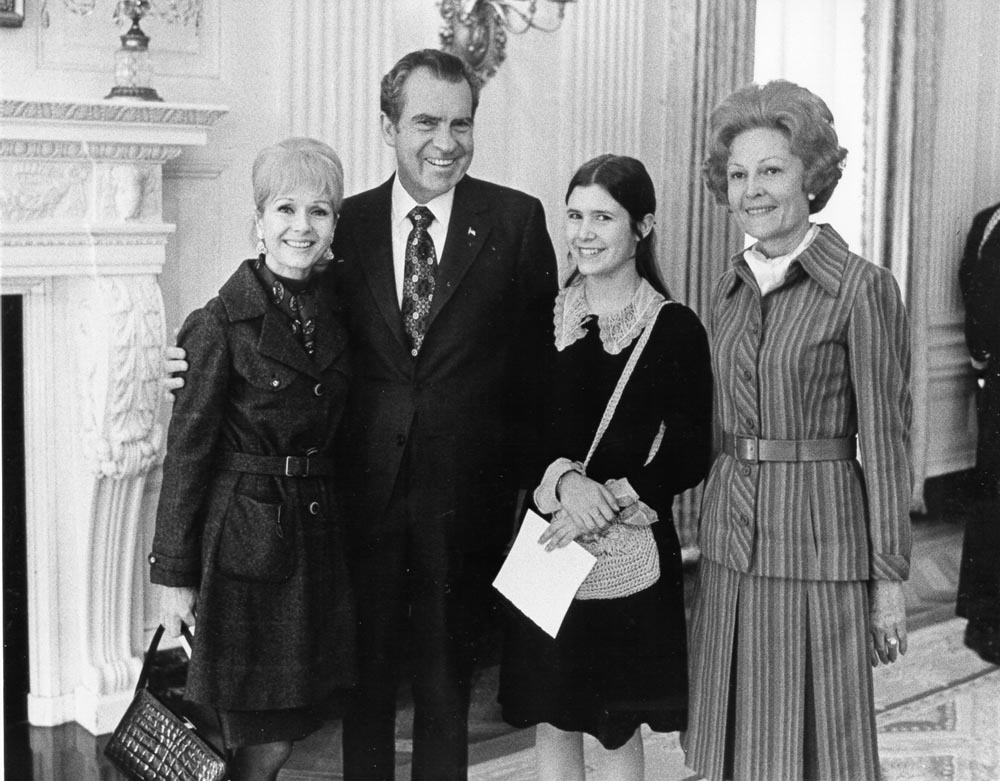
Actress Debbie Reynolds, far left, President Richard Nixon, Reynolds’ daughter, the actress Carrie Fischer, and First Lady Pat Nixon. in the East Room of the White House. 1973.
Last week’s news of the sudden death by heart attack of actress and writer Carrie Fischer, followed a day later by her beloved mother and Hollywood actress and legend Debbie Reynolds by stroke, provoked numerous recollections of their individual and joint lives.

Nixon and Reynolds first met in the 1950s, a brief encounter at the Burbank airport.
One neglected thread of their bumpy, devoted, prickly and often hysterical relationship was the visit they both made to the Nixon White House, on a Sunday in the winter of Watergate, 1973.
Nearly two decades earlier, Debbie Reynolds first met Richard Nixon in Hollywood, when she was at the height of her fame and glory as a motion picture star, and also president of a charitable organization known as the Thalians.
Then serving as Eisenhower’s Vice President, Nixon deboarded his flight from Washington at the Burbank Airport, to be met by Reynolds and publicists and photographers as she presented him with a scroll making him an honorary member of the organization.
Neither apparently made reference to that brief encounter on overcast, sultry August 27, 1972 when next they met.
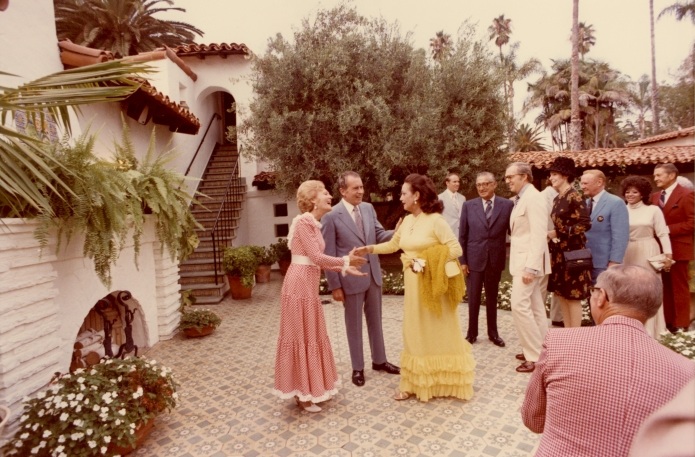
Pat Nixon greets actress Dorothy Lamour (Lawrence Welk in maroon suit several behind her in line) with the President at their San Clemente estate, La Casa Pacifica.
That Sunday, the President and Mrs. Nixon hosted a “Galaxy of Stars” reception at their private home, the Western White House La Casa Pacifica, in San Clemente, California.
The presence of Hollywood star power that day was staggering:
Bob Hope, George Burns, John Wayne, Frank Sinatra, Wayne Newton, George Jessel, Glen Campbell, Lawrence Welk, Dorothy Lamour, Eva and Zsa Zsa Gabor, Jane Withers, John Wayne, Rudy Vallee, Audrey Meadows, Red Skelton, Chad Everett, Jill St. John…

President Nixon welcomes Frank Sinatra to his San Clemente home.
…Kurt Russell, Sammy Kaye, Nancy Sinatra, Lionel Hampton, Stanley Livingston, Buddy Rogers, Tex Ritter, Ry Bolger, Gene Raymond, Jack Benny, Chuck Connors, Pat Priest, Abigail Van Buren, Sammy Davis, Buck Owens, Charlton Heston, Virginia Mayo, Lloyd Nolan, Buddy Ebsen, High O’Brien, Vic Damone, Connie Francis, Dan Rowan and Dick Martin…

Zsa Zsa Gabor cracks up Mrs. Nixon.
…Morey Amsterdam, Yvonne DeCarlo, Merv Griffin, Alan Ladd, Ann Blythe, Cybill Shepherd, Agnes Moorehead, Ken Murray, Art Linkletter, Ruta Lee, Don Defoe, Clint Eastwood, Rich Little, Susan Hayward, Ralph Edwards, William Conrad, Vicki Lawrence, Julie Sommars, the King Sisters…
…Nancy Sinatra, Lester Lanin, William Demarest, June Allyson, Michael Landon, Laine Kazan, Olivia Newton-John, Mary Tyler Moore, Rona Barrett, Amanda Blake, Glenn Ford, Doug Fairbanks, Jr., Frankie Avalon, Barbara Eden, Ronald and Nancy Reagan.

Debbie Reynolds meets Richard Nixon a second time, the summer of ’72.
And a Mrs. Harry Kaye. Known professionally as Debbie Reynolds.
Here’s a video of the movie stars at the presidential residence:
So, was Debbie Reynolds a Republican? Not necessarily. It seems that the invitation was directed to her husband. At the least, she certainly knew that being too overtly political could work against her Hollywood career, at least in the Fifties, Sixties and Seventies.
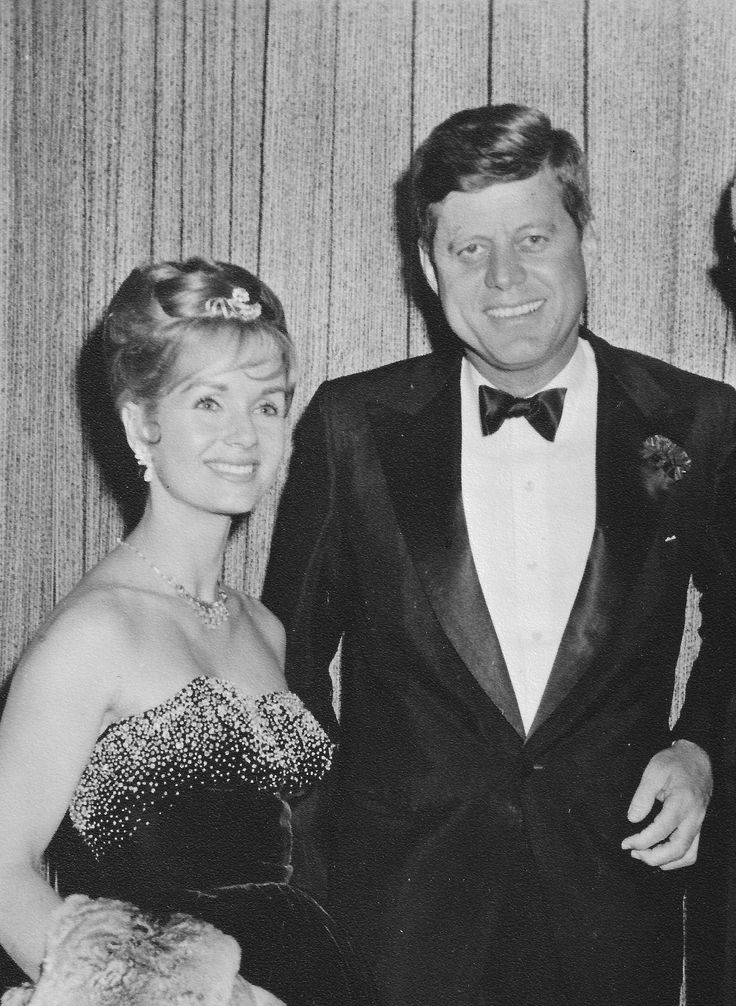
Debbie Reynolds and President Kennedy.
Certainly, she was happy to enjoy both sides of the aisle. She was visibly beside herself when she met President John F. Kennedy. She became almost speechless when he complimented her on her jewelry.
When word reached her that he had been assassinated, the naturally optimistic Debbie Reynolds searched for some possible explanation, in the moment finding blame in a lowering of national morals: “What can you expect with so many slutty books, dirty movies and pornographic material going through the mail? Teenage pregnancies are at an all-time high and parental discipline is at an all-time low. The country’s morals are at a new low.”
Six months after again meeting the Nixons in San Clemente, they had their third encounter on February 22, 1973.
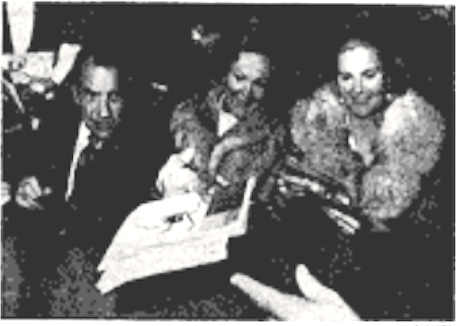
The President, First Lady and First Daughter sign autographs during the intermission of the stage musical Irene.
That night. as President, Richard Nixon, along with First Lady Pat Nixon and First Daughter Tricia Nixon Cox all slipped backstage to congratulate the actress after her starring performance in the stage musical Irene.
Despite winning re-election in his 1972 landslide, and being inaugurated just a month earlier as well as announcing complete troop withdrawal from Vietnam, President Nixon was already solidifying into the bunker mentality that would cut him off from all but a handful of aides. The Watergate scandal had broken seven months earlier and congressional hearings had already begun to unravel the trail that would eventually lead to Nixon’s resignation in August of 1974.
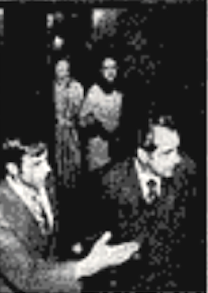
The Nixons head backstage to congratulate Debbie Reynolds after attending the preview of her show Irene.
Seeking to entice her father from out behind the White House gates, his daughter Tricia Nixon Cox got three tickets for herself and her parents to see a revival of the 1919 musical Irene, then in previews at the National Theater. It was a bubbly piece of nostalgia, a time piece set half a century earlier in the era of the Nixons’ youth, with old-fashioned music and lyrics untroubled by war, crime, drugs or permissiveness.
Backstage, Nixon gushed to Debbie Reynolds his approval of her vehicle. Using the show to score with the “silent majority” of middle Americans who formed the core base of his supporters, Nixon quipped that he loved the show and predicted it would do well in New York not with snobbish urban theater sophisticates but rather with “out-of-towners.” It was a pointed cultural reference to the hip types of Broadway musicals increasingly popular with those of more progressive tastes, notably the show Hair, which featured nudity. Or, as President Nixon called it, “all that far-out stuff.”
Nixon’s remarks met with sarcasm from publications hostile to him. Newsweek snarled that Nixon’s turned Irene into “a moral category,” commercialized sentiment from the very first sound of the old-fashioned banjo, “shamelessly selling us everything from our father’s mustache to the [song] Sweet Little Alice-Blue Gown that is the most famous of its museum of museum keepsakes.” The New York Times dubbed it “the best 1919 musical in town.”
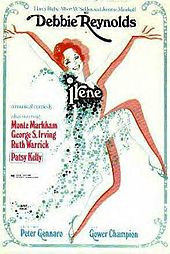
Debbie Reynolds in the promotional poster for Irene.
As the Village Voice reviewed:
“As a part of a plan to reshape America, President Nixon has recently come out in favor of Irene . . . Since the President has made it a political issue, it is impossible for me not to be prejudiced against it . . . It is the foremost, if perhaps not the first counterrevolutionary musical comedy…the second-night audience — composed as far as I could tell, mostly of real paying customers — adored it. They laughed, they applauded, they had a glorious time…. You sense Irene belongs to somebody — yes, to those out-of-towners….If you like Richard Nixon, you’ll love Irene.”
None of that mattered – Nixon’s endorsement proved a boom to pre-sale tickets on Broadway.
The effervescent Reynolds, with the President as her captive audience for a few moments couldn’t help but ask for one favor. Her daughter would love to see the White House.
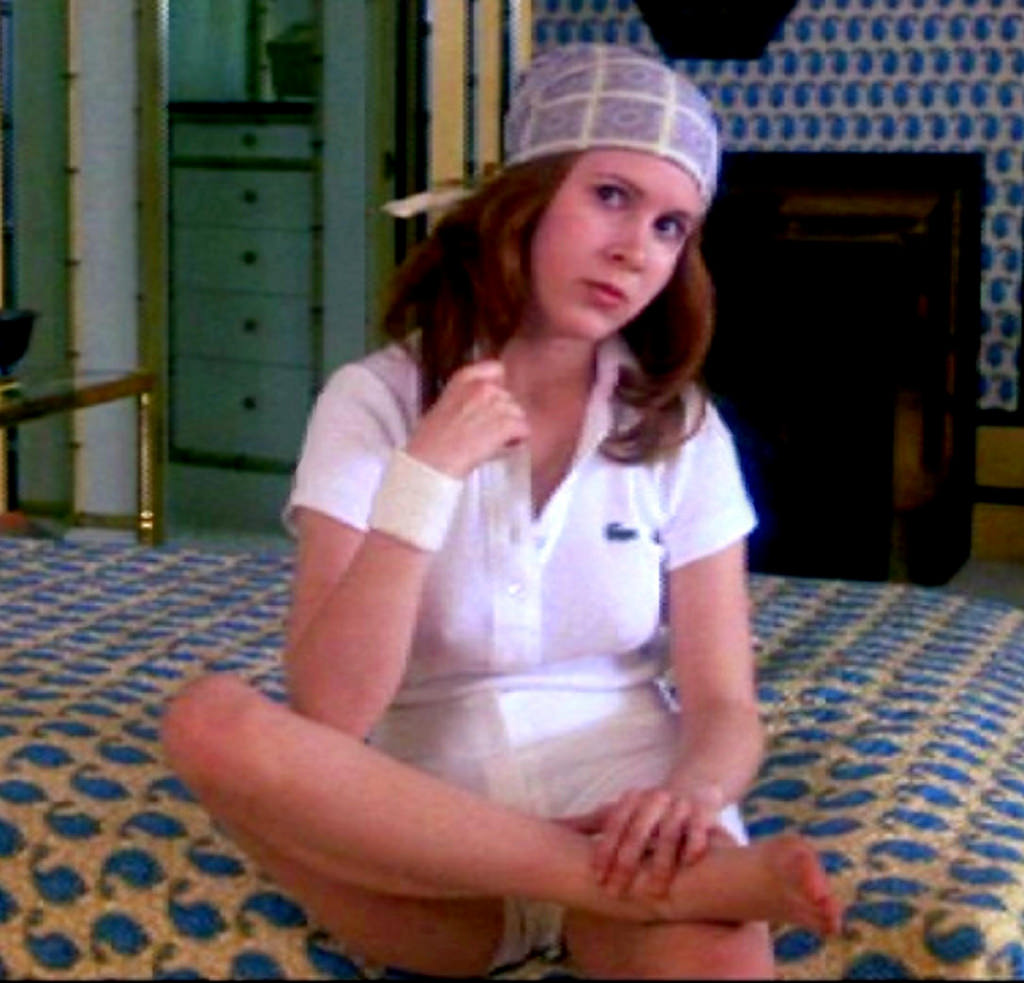
Carrie Fisher in Shampoo.
Then traveling with her mother was her sixteen-year old daughter Carrie Fisher, who would find mass fame in her iconic role as Princess Leia in Star Wars four years later.
Her film debut, however, was just two years after she met Nixon, in Shampoo.
Ironically, the film was set in Los Angeles during the first presidential election of Richard Nixon, in 1968, with characters who appeared as respectable supporters of the candidate in public being anything but that in private.
The Nixons invited Debbie Reynolds and Carrie Fisher to the White House, to attend a Sunday religious service, followed by a reception.
The problem was that Carrie Fisher did not want to go to the White House. She did not want to meet President Nixon. “No! I won’t go!” she yelled at her mother adamently. According to Reynolds’ memories, her daughter “wasn’t interested in politics and some of her friends had explained President Nixon’s troubles to her.” Carrie Fisher’s reaction “wasn’t subtle.”
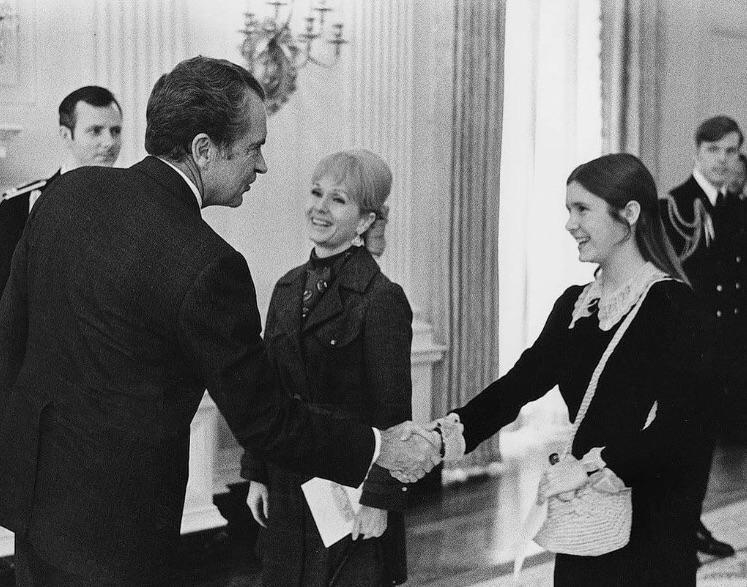
A nervous mother, a smiling daughter and a friendly President.
“No! No, no, no!” Carrie Fisher insisted.
Debbie Reynolds wasn’t turning down the invitation. “We’re going. It’s a chance to visit our First Family’s home.”
In later years, neither mother or daughter could recall how it was that she “bribed” the recalcitrant Fisher to not only go to the White House with her, but to wear a demure velvet dress with a high lace collar. Some earlier sources claim that Debbie Reynolds threatened to take away Fisher’s credit card.
Showing considerable acting skills, the photo of them with Nixon shows Carrie Fisher smiling graciously. Nixon was so impressed that he sent her an autographed picture, inscribed, “May all your dreams come true.”

Debbie Reynolds and Carrie Fisher.
Still angry that her mother had manipulated her into going to the White House, Fisher kept threatening that she was composing a letter to the President declaring that her dream was that “you are impeached.” Reynolds sighed relief when Nixon resigned before her daughter ever sent the letter.
In later years, Carrie Fisher received another picture of the now-former President, inscribed, “For Carrie – from one of her fans.” She hung both Nixon pictures in her bathroom.
“You see!” Debbie Reynolds later recalled lecturing her daughter, “if you hadn’t listened to your mother then, your bathroom now would never have become so distinguished.”
Categories: Hollywood, The Nixons
Tags: Carrie Fischer, Debbie Reynolds, John F. Kennedy, Pat Nixon, Richard Nixon, Tricia Nixon
 Jackie & The Nixons: Mrs. Kennedy Returns to the White House, With New Images of the Visit
Jackie & The Nixons: Mrs. Kennedy Returns to the White House, With New Images of the Visit  Liz Taylor Meets Jackie Kennedy: Tabloid Fantasy to Chance Encounter & The Only Photos of Them Together, Part I
Liz Taylor Meets Jackie Kennedy: Tabloid Fantasy to Chance Encounter & The Only Photos of Them Together, Part I  Liz Taylor Meets Jackie Kennedy: Tabloid Fantasy to Chance Encounter & The Only Photos of Them Together, Part II
Liz Taylor Meets Jackie Kennedy: Tabloid Fantasy to Chance Encounter & The Only Photos of Them Together, Part II  The Nixon Family’s White House Halloween Parties of the Seventies: Pumpkin Pictures
The Nixon Family’s White House Halloween Parties of the Seventies: Pumpkin Pictures  Cat & Bird: When Actress Eartha Kitt Challenged First Lady Johnson on the Vietnam War
Cat & Bird: When Actress Eartha Kitt Challenged First Lady Johnson on the Vietnam War  Those Seventies Women: Betty Ford on Mary Tyler Moore, Mary Tyler Moore at Betty Ford
Those Seventies Women: Betty Ford on Mary Tyler Moore, Mary Tyler Moore at Betty Ford
Leave a Reply